You can use a VPN client to get around the government or institutional censorship on the Internet. Most commercial VPNs will also allow you to access regionally restricted content, such as Disney+, Netflix, and Hulu in the United States. You can acquire the OpenVPN client if you don’t want to pay for a VPN subscription. This page explains what OpenVPN is, how it works, the many versions, and how to install and use it on your newly installed Windows 11.
What Is OpenVPN?
OpenVPN is a virtual private network protocol that is free and open-source. It allows you to use a safe encrypted tunnel to secure your Internet connection from one machine to another. The fact that OpenVPN is open source is a huge plus. It is available for free download and use.
It runs on all of your favorite operating systems, including Linux, macOS, and Windows.
Because our VPN software is supported by a worldwide community of developers and users, any security flaws are quickly recognized and corrected. You can also participate in this program if you’re a bit of a tech nerd. You can examine the source code, add new features, fix any flaws, and create your own products.
See more: Top 10 Best VPNs For Windows 11/10
How OpenVPN Works
OpenVPN is a VPN client as well as a protocol. That means you can use it immediately if your current VPN supports the OpenVPN protocol. You can also download and install it on your PC because it is also a VPN client.
UDP vs. TCP
OpenVPN employs two key protocols by default:
- The OpenVPN User Datagram Protocol (UDP)
- The OpenVPN Transmission Control Protocol (TCP)
The UDP protocol allows your device to connect to the private network more quickly. Because it is speedier than other options, this will most likely be your primary connectivity option.
You can alternatively use the TCP protocol, which allows you to keep control of data transfer. While significantly slower, it usually ensures consistent speeds and a stable connection.
Encryption
OpenVPN uses SSL/TLS technology to keep communications secure, which is used to protect millions of HTTPS websites on the Internet. This offers its own set of benefits, such as the ability to get through some firewalls and VPN blockers. Even though you’re using a VPN, your Internet traffic will appear regular once you’ve set it up on your PC.
When it comes to encryption, OpenVPN relies on the robust and comprehensive OpenSSL library. However, that isn’t the only protocol it employs. It works with the majority of industry-standard encryption methods, hash functions, and public-key cryptography.
Here are a few examples:
- Poly1305
- MD5
- AES
- SHA-2
- SHA-3
- BLAKE 2
- RSA
- Whirlpool
- Chacha20
Flexibility
OpenVPN can be configured in any way you want. You have a lot of influence over how it functions. You can, for example, pick between encryption techniques if you’re aiming for speed. It also has the ability to adjust network settings (including DNS servers) and supports both IPv4 and IPv6, which is no small feat.
Do you want to add more features to it? It’s no problem. It allows plug-ins and scripts, allowing you to tailor your experience to your own requirements.
Free or Paid: The Difference Between Community and Enterprise Versions
CE stands for Community Edition and is an open-source VPN project. It’s released under the GNU General Public License, and it’s backed by a large community. A large number of developers, as well as a larger community of users, contribute to the project.
Furthermore, the CE version has had over 50 million downloads. Although OpenVPN CE is free to use, it does require some knowledge of Linux and the command-line interface.
Access Server is a global enterprise VPN service for enterprises. You can protect your data, interactions, and technological resources by using this VPN. Aside from that, it provides secure remote access to private, hybrid, and public cloud resources for your employees.
It’s simple to use, manage, and set up, even if you don’t have much experience with Linux. It supports both PC and mobile platforms, as well as cloud environments like AWS, Oracle, and Azure, just like the CE version.
Although the software is free to download, you must pay OpenVPN Inc. for each active connection. You receive two simultaneous connections for free for testing purposes. OpenVPN provides a scalable solution that allows you to pay just for what you use, regardless of the size of your company.
Is OpenVPN Secure?
You can use the OpenVPN protocol to shield yourself from government snooping and other prying eyes.
OpenVPN is Open Source
This service is not owned by a single person. Because it is backed by such a large community, everyone helps to keep it safe. Any developer can repair defects as soon as they’re discovered, and it’s usually very quick. It’s also adaptable, as new features can be added to make it even safer to use.
OpenVPN Supports Multiple Encryption Standards
OpenVPN employs AES-256 encryption by default, although the bits can be adjusted upwards or downwards. Aside from that, OpenVPN offers a variety of additional ciphers. For more, see the list above.
How to Set Up OpenVPN in Windows 11
Here’s how to get the OpenVPN Graphic User Interface up and running on your computer:
1. Go to the OpenVPN webpage. Hover over the “VPN Client” option in the header menu and pick “OpenVPN Connect.”
2. Select “Download OpenVPN Connect for Windows” from the drop-down menu. This will bring up a window requesting you to save the installation file to your computer. “Save File” should be selected.
3. Open the installer and execute it once it has finished downloading. This launches the Setup program. To proceed, click “Next.”
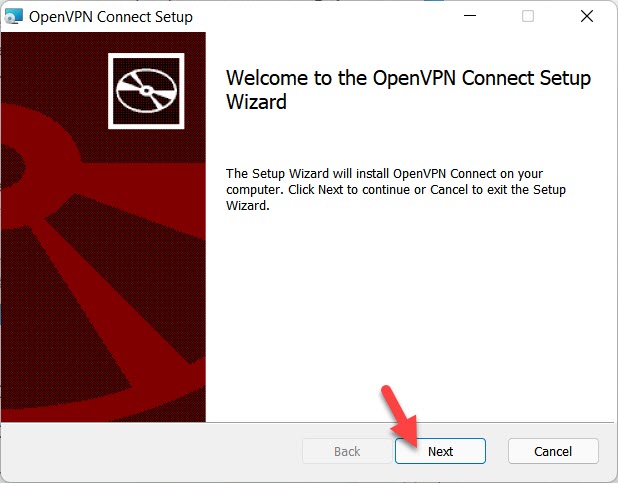
4. After you’ve confirmed the license agreement, click “Next” to proceed.
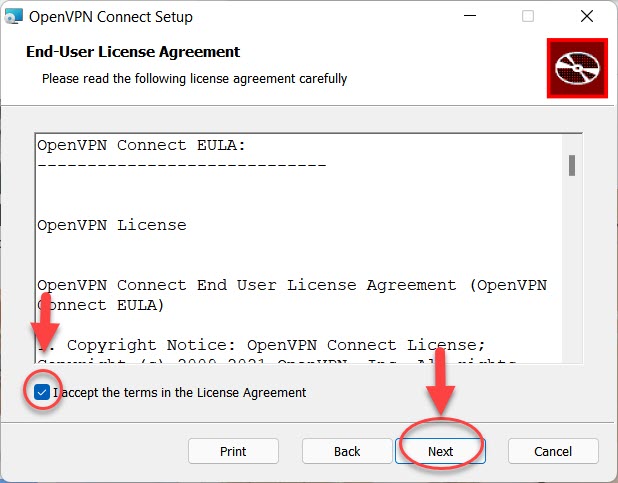
5. This brings up a confirmation window. To continue, use administrator access to click the “Install” button.
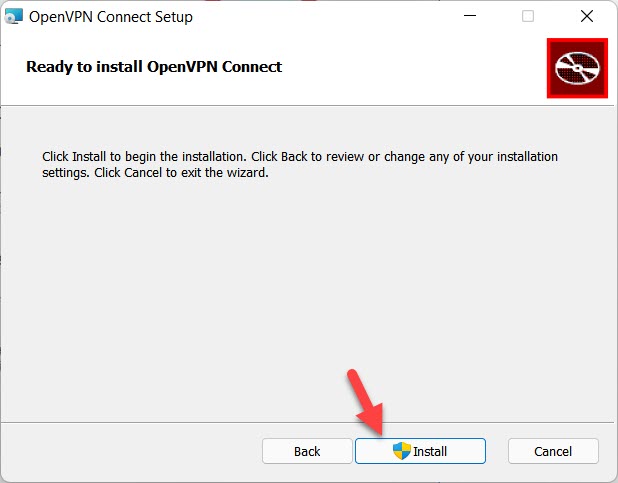
6. The installer will ask if you want to install a new driver. “Yes” should be selected.
7. Click “Finish” when the installation is finished.
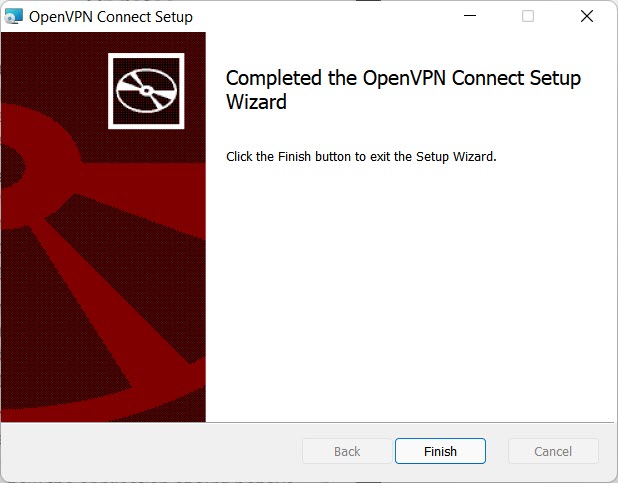
8. OpenVPN displays a small tutorial to help you get started. To get to the end, click “‘>”
9. Click “Get Started” on the fourth page of the carousel.
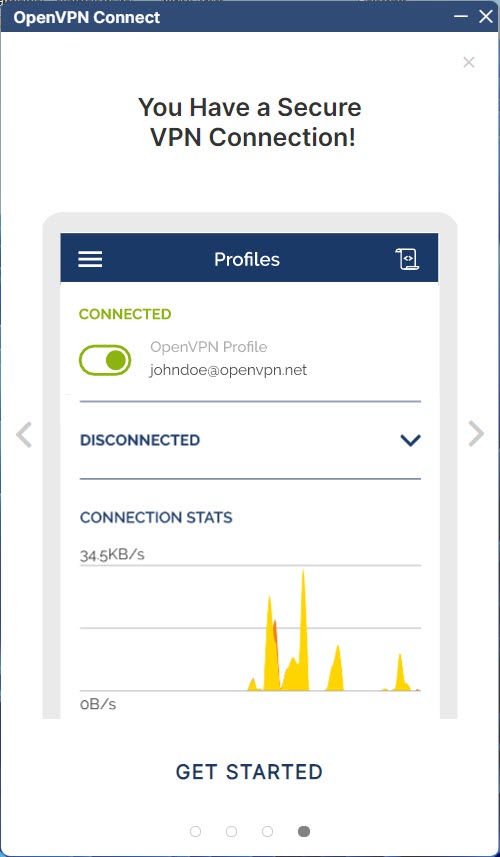
10. The “Data Collection, Use, and Retention” screen appears. To proceed, click “Agree.”
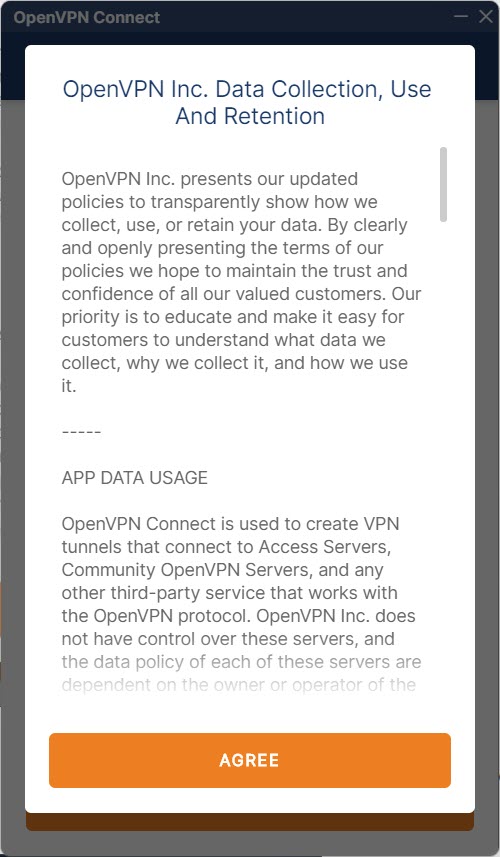
11. If the software has had any recent updates, the client will show you what they are. To proceed, click “OK.”
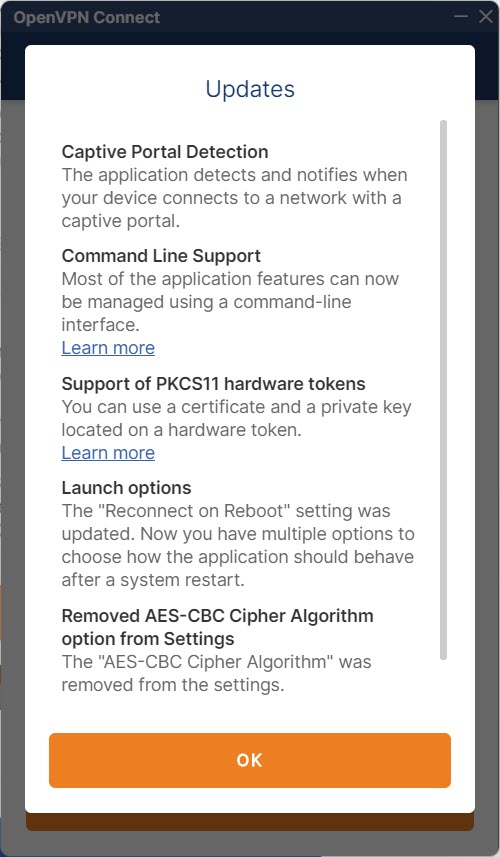
12. You’ve completed the setup process and are now ready to start!
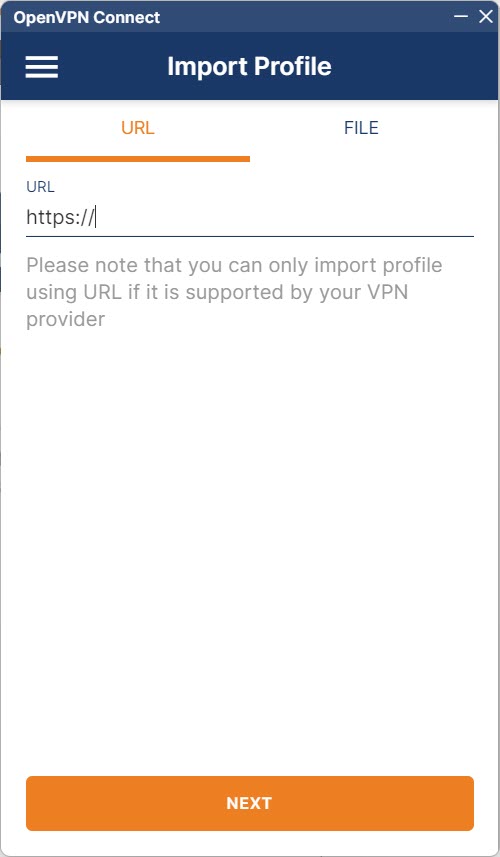
In this video, we are gonna show you how to install and setup OpenVPN on Windows 11:
How to Find, Select and Use Free OpenVPN Servers
You’ll need to identify servers that can connect to the Internet now that you’ve installed the OpenVPN GUI on your machine. You can utilize the configuration parameters from an organization that already supports OpenVPN.
If you don’t have access to a private server, you can utilize the public server setup options. VPN Gate is a great place to look for these server settings.
VPN Gate
VPN Gate is a university scientific study at Tsukuba University in Japan. The goal of this research is to learn more about how worldwide distributed public VPN relay servers work. The following is a list of some of the advantages of using VPN Gate’s settings:
1. Protects your internet activity when using public Wi-Fi by encrypting it with powerful encryption.
2. While accessing the Internet, it hides your identity and IP address.
3. Website and web service limitations imposed by the government, regional governments, and institutions are bypassed.
Importing VPN Gate Servers
It’s simple to import server settings into your OpenVPN client. To begin, consider the following:
1. Go to VPN Gate’s website.
2. Choose a profile from the list of Public VPN Relay servers on the homepage.
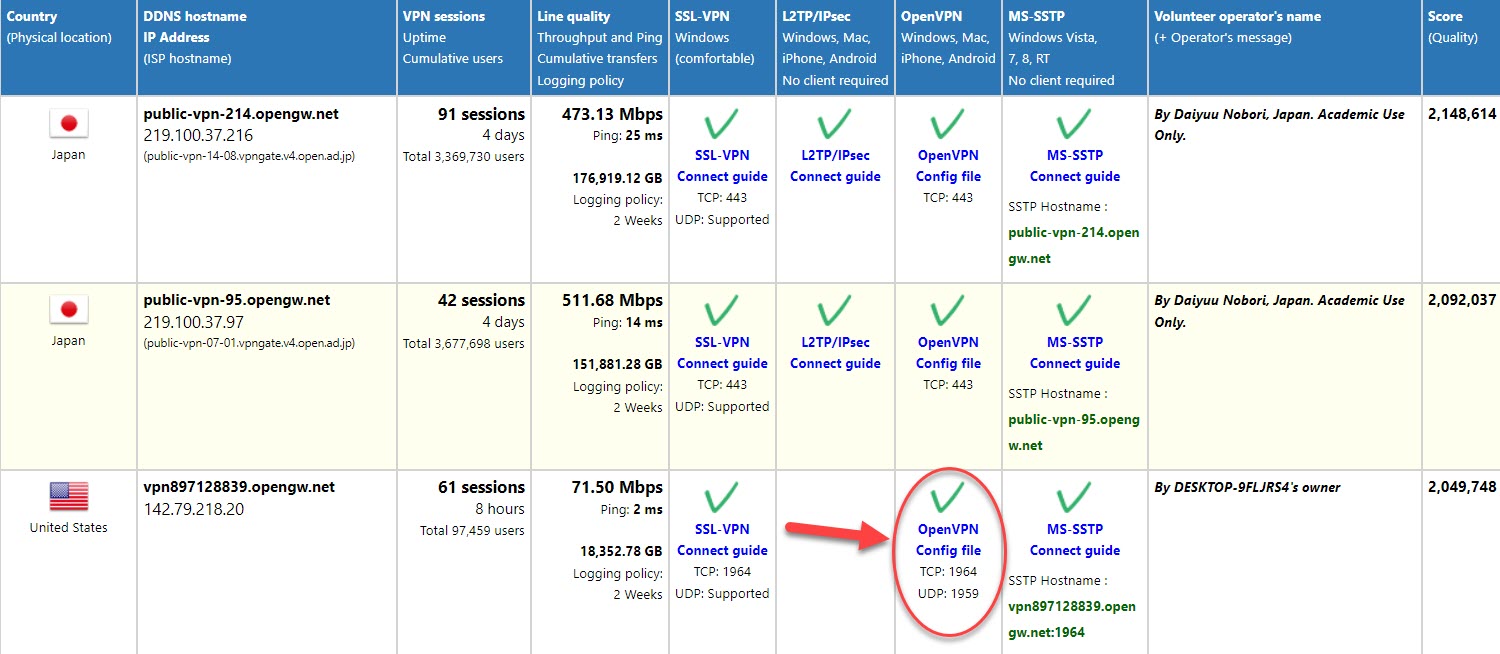
3. Select “OpenVPN Config file” from the OpenVPN table to proceed to the next page.
4. Download an OpenVPN configuration file from this page. (This file has an.ovpn extension.) Depending on whether you desire fast speeds or reliability, you can choose between UDP and TCP.
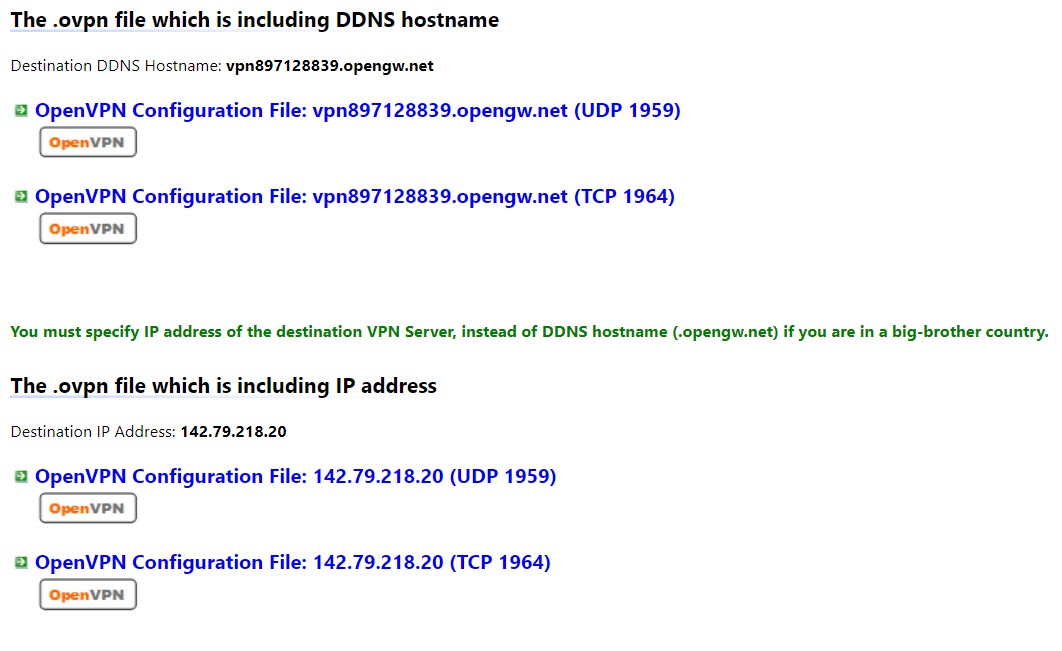
5. Once your download is complete, open the .ovpn file in OpenVPN Connect by double-clicking it. You can also directly import it or drag and drop it into the user interface.
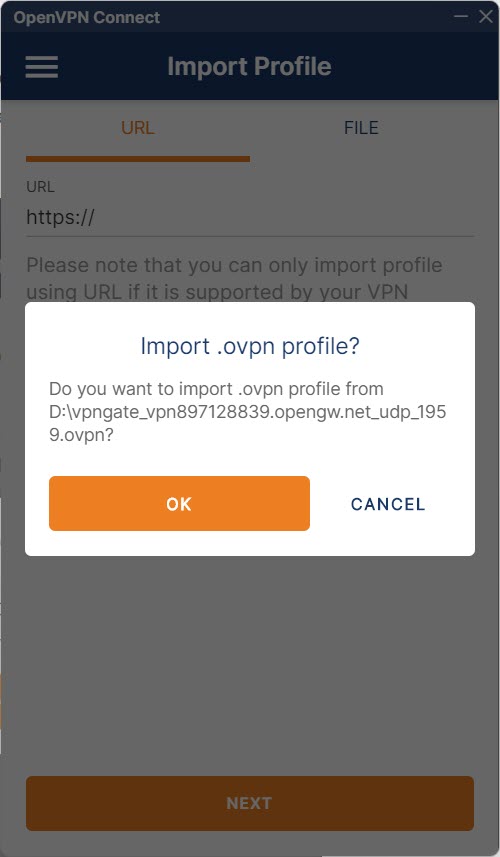
6. These settings are immediately exported to your device by the client. Click the “Connect” button to start using the VPN.
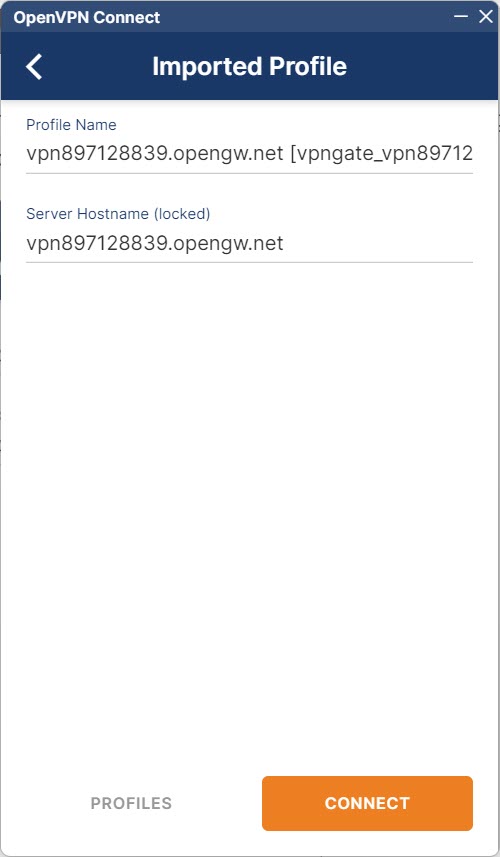
7. Your client should immediately connect to the Internet.
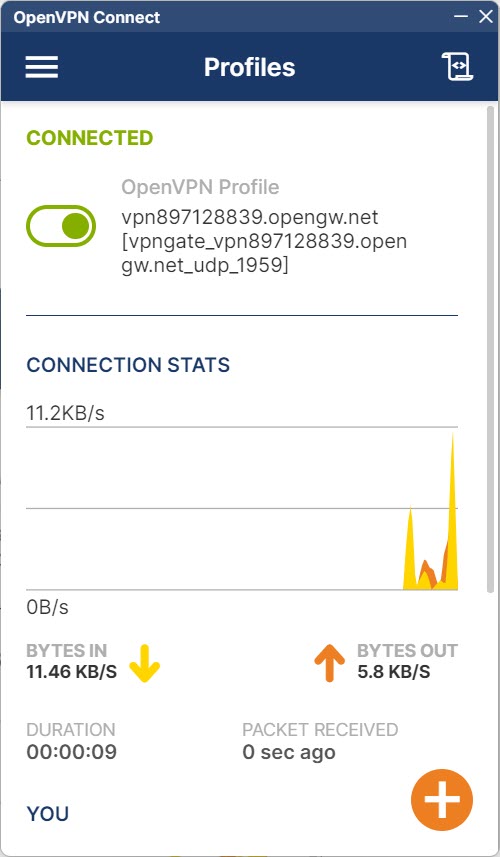
You can import as many profiles as you would like but only one at a time. Also, you can only use a single profile at a time.
Frequently Asked Questions
1. Is using OpenVPN legal?
It is, of course. VPN services are legal to download and use in the United States. This holds for both public and private businesses. To secure their communications and systems, the majority of them rely on VPN networks. That’s why consumer VPN providers abound in the United States, including behemoths like Google.
2. Is OpenVPN free?
Under an open-source license, the OpenVPN Connect client is free to use. The OpenVPN Access Server solution is also available from OpenVPN Inc. for a fee. However, because the Access server product is frequently used by corporations, you’ll never have to utilize it as a single consumer.
3. Can OpenVPN be hacked?
While any VPN (including OpenVPN) can be hacked, doing so is extremely difficult. In fact, hacking a machine on a network without a VPN is far easier than hacking one with one. Furthermore, because OpenVPN is open source, any weakness discovered in the software is frequently patched by members of the OpenVPN community, ensuring its security.

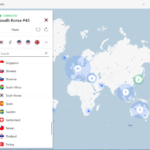




![How to Configure Proxy Settings on Android Devices [FREE] How to Configure Proxy Settings on Android Devices [FREE]](https://windows10freeapps.com/wp-content/uploads/2024/12/setting-up-a-proxy-for-a-wi-fi-network-1-150x150.jpeg)
